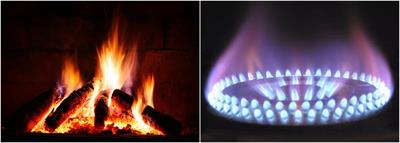PDF chapter test TRY NOW
A combustion reaction is a chemical reaction in which the reactant rapidly reacts with oxygen, releasing energy (usually in the form of heat). So, the most important element in the combustion process is oxygen. In the absence of oxygen, combustion is impossible.
Examples of combustion reaction sin our daily life:
- Our automobiles, bicycles, and other vehicles rely on fossil fuels. These fuels undergo a combustion reaction with oxygen to drive the engine.
- In the winter, wood or other solid fuels such as coal are burned to get warm. The carbon contents of the wood or coal react with the oxygen in the atmosphere to create heat and other gaseous products.
- LPG (Liquified Petroleum Gas) is used in our home for cooking purposes. Heat and flame from LPG are produced by the combustion reaction of its constituent gases. LPG is a mixture of hydrocarbon gases such as propane, butane, propylene, etc. These hydrocarbons burn with oxygen to form carbon dioxide and water.
C_3H_{8(g)}+5O_{2(g)}→3CO_{2(g)}+4H_2O_{(g)}+Heat

Examples of combustion reaction
All combustion reactions are oxidations, but all oxidations are not combustion reactions. Why?

Heat and light are involved in combustion reactions, whereas heat is not involved in oxidation reactions. All combustion reactions are oxidizing since they absorb oxygen for the reaction to occur, but all oxidation reactions are not combustion reactions.
A combustion reaction is
- An exothermic reaction because it releases heat.
- Oxidation reaction due to the absorption of oxygen.
So, combustion may be called exothermic oxidation. If a flame is formed, then it is called burning.
So many reactions come under these five categories, and you will learn in detail about these reactions in your higher classes.
Reference:
https://th.bing.com/th/id/OIP.E6t-OBUPuZ6gvsbLQ8O_-QHaFj?pid=ImgDet&rs=1
https://pixabay.com/photos/fire-fireplace-wood-black-fire-1159157/
